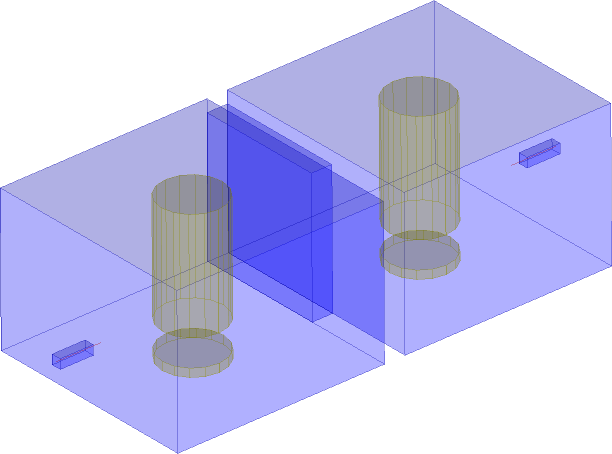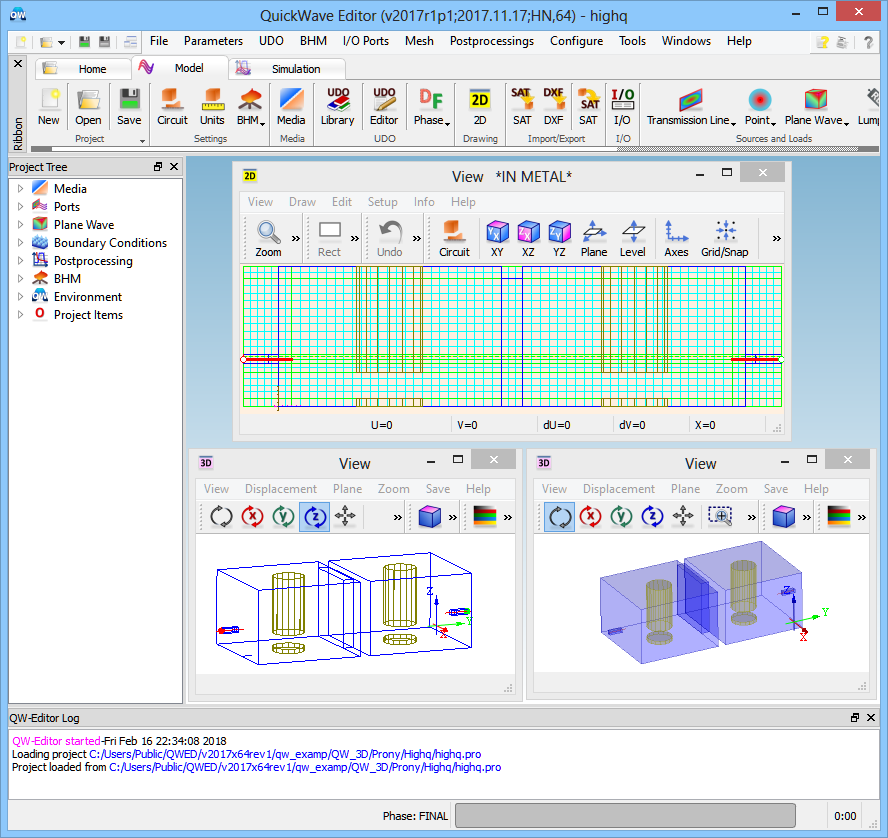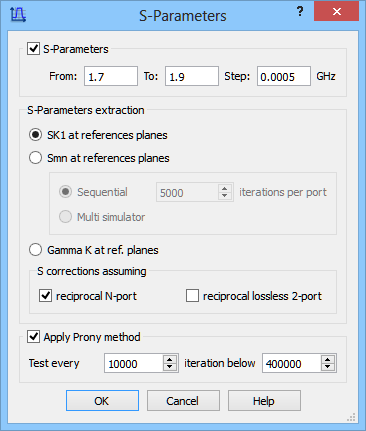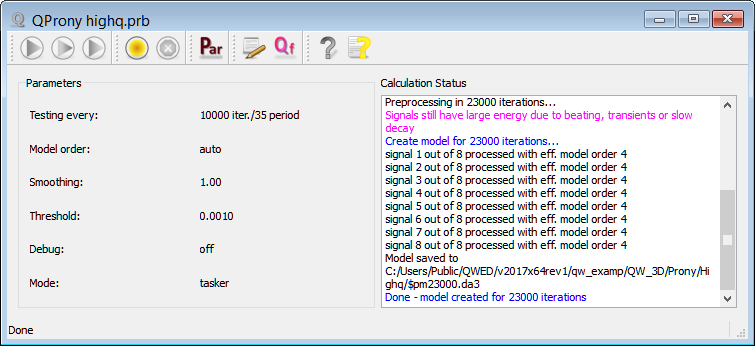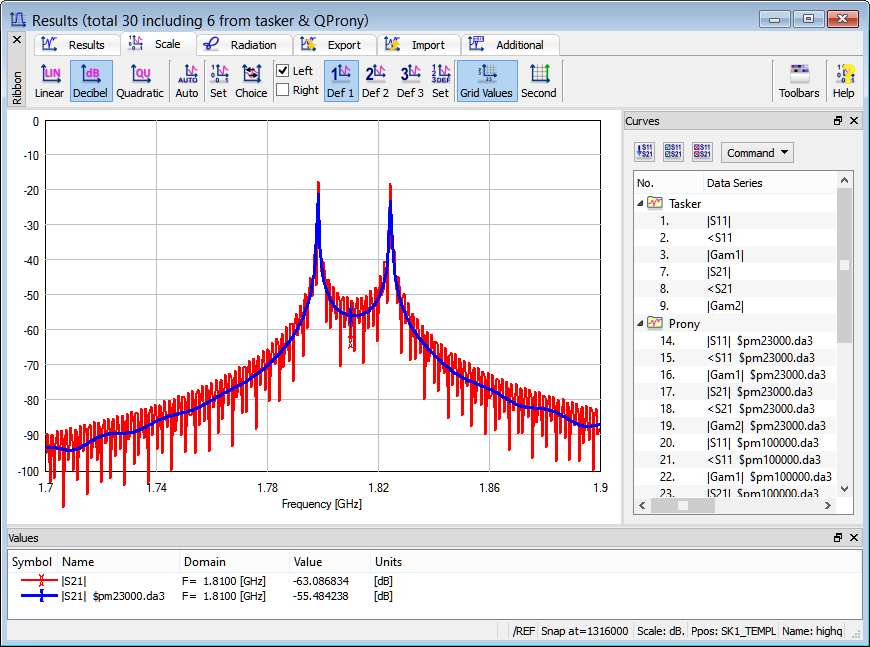Comb‑line filter
The present example considers a comb-line filter.
The comb-line filter consists of two cavity resonators coupled via a rectangular aperture. Each cavity is a TEM-resonator and the whole system is excited and probed via coaxial lines. In the analysis of this structure, the QProny module will be applied.
Comb-line filter project in QW-Editor.
With two cavities in the system, one can predict that the structure can be described with QProny model of the order P=4. Because the circuit is only weakly coupled to the source and load via coaxial lines, high Q-factors may be expected. Moreover, the two cavities are identical; their resonant frequency will be detuned only slightly by the coupling aperture. Accordingly, beating can be expected.
For the purpose of calculating reflection and transmission characteristics of the structure the S-Parameters postprocessing and QProny module are activated. The S-Parameters postprocessing is set from 1.7 GHz to 1.9 GHz with a frequency step of 0.0005 GHz.
S-Parameters postprocessing configuration dialogue with QProny module activated.
QProny module control window with Calculation Status information ( information about the model created after 23000 iterations).
The |S21| characteristic obtained from Fourier postprocessing (red) after 1316000 iterations and QProny module result (blue) after 23000 iterations.



